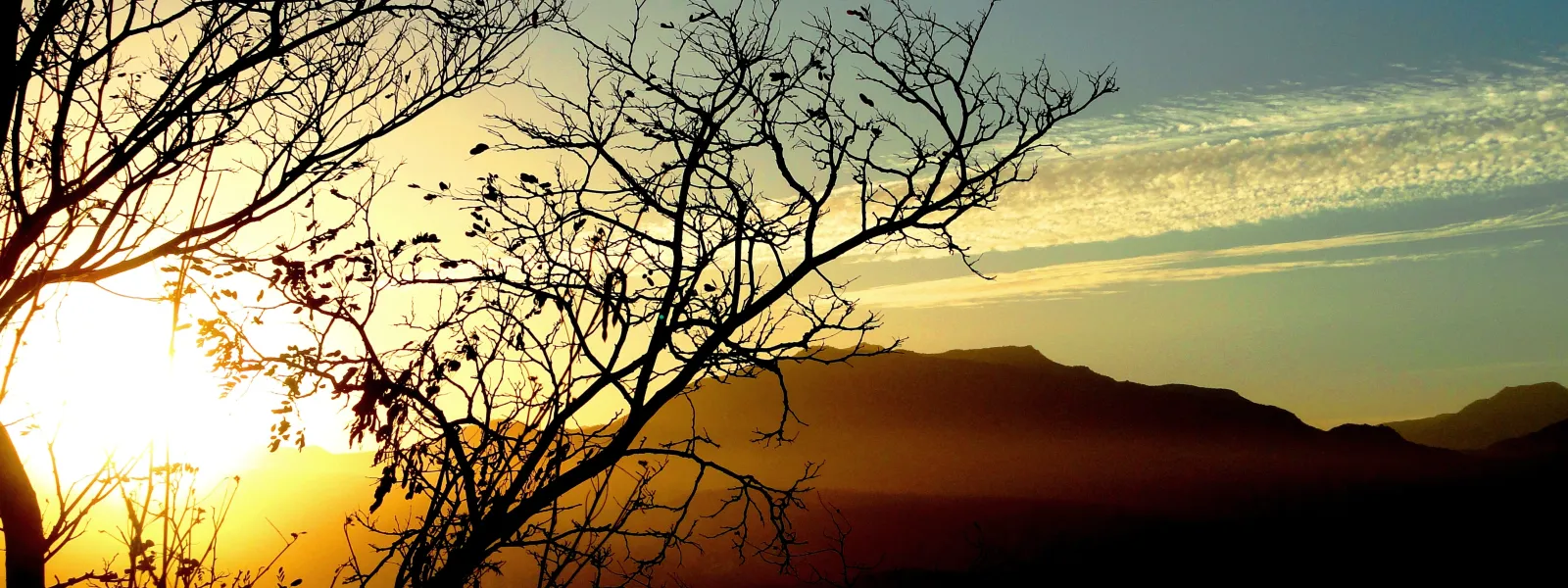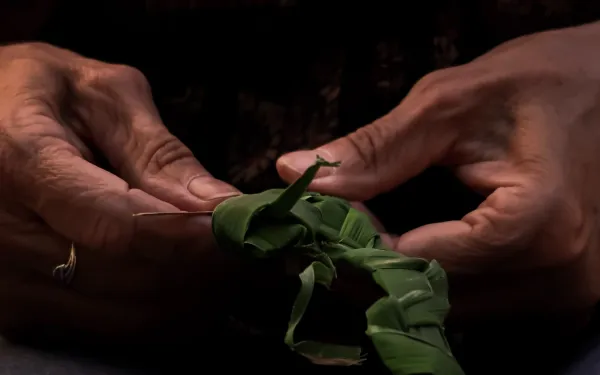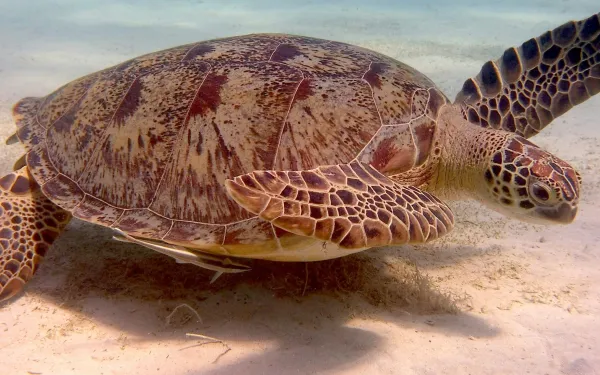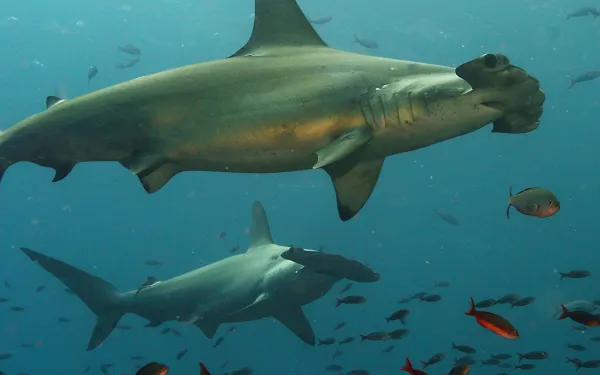
Project
Photo: Ana Rodríguez Carrington (CC BY 2.0)Victory: Biosphere Reserve in Baja California Saved from Toxic Mine
Known as an “ecological treasure house,” the Sierra La Laguna Biosphere Reserve at the southern tip of Baja California will not be spoiled by toxic mine waste, thanks in part to AIDA’s advocacy.
The reserve was once an island, so it’s home to rare plant and animal species. Canyons, swimming holes, and hot springs can be found in its granite mountain range and lowland tropical forests.
Thanks to AIDA and our partners in Mexico, the Mexican government denied an environmental permit for the Paredones Amarillos gold mine, halting the project for the time being. To protect the biosphere reserve, AIDA helped educate community groups and decision makers about the mine's risks. This helped to build the political momentum necessary for the government to deny the permit.
To extract gold from the mountains, the Canadian company Vista Gold proposed to carve out huge quantities of rock—each ton containing a mere gram of gold–-grind it into sludge, and treated it with cyanide. The company planned to dump massive amounts of toxic waste (called “tailings”) behind a dam intended to store it forever. Unfortunately, tailings dams can break for various reasons, as happened at Bolivia’s Porco mine in 1996. When that dam collapsed, more than a quarter million metric tons of tailings flooded the river and contaminated 500 miles (800 km) of waterways in Bolivia, Argentina and Paraguay.
The mine could also cause acid mine drainage. When sulfur-containing rocks are exposed to air and water, sulfuric acid forms, which causes toxic heavy metals to dissolve and drain into the watershed. The risk of acid mine drainage in Sierra La Laguna was significant and the human and environmental cost would have been tremendous: thousands of people and countless wildlife in the reserve rely on its water for survival.
Depleting freshwater is a further threat because mines use tremendous quantities of water. Owing to the scarcity of water in the reserve, Vista Gold proposed to build a plant on the Pacific coast to remove salt from sea water in a highly energy-intensive process, and then pump the water 45 km to the mine site. The desalination plant posed a threat to the endangered leatherback sea turtle.
Singly and together, the mine’s impacts would have devastated a rare jewel, a unique and lush paradise worth saving for future generations.
Related projects

Climate Justice and Human Rights: Legal Standards and Tools from the Inter-American Court’s Advisory Opinion 32/25
On July 3, 2025, the Inter-American Court of Human Rights (IACtHR) delivered its Advisory Opinion OC-32/25 on Climate Emergency and Human Rights (Advisory Opinion), marking a historic legal and political milestone in the global fight for climate justice. It is the first advisory opinion issued by an international court to find that both States and non-State actors, such as business enterprises, have obligations rooted in international human rights law to address the causes and consequences of the climate emergency.The Court articulates clear and binding obligations to act urgently in protecting the global climate system, preventing human rights violations resulting from its alteration, and securing climate reparations. The Advisory Opinion will guide climate litigation in local, regional, and national courts, and provide a foundation for climate policymaking, grounding local legislation and global negotiations not in voluntary commitments, but in legal duties. It will also serve as a testament to the lived experiences and expertise of those on the frontlines of climate harm and at the forefront of climate justice, affirming the peril that climate change represents for human rights and the promise of human rights-based climate action and remedy.This Advisory Opinion is not an isolated development but rather part of an unprecedented global movement for climate justice. It stands alongside the recent climate advisory opinions of the International Tribunal for the Law of the Sea (ITLOS) and the International Court of Justice (ICJ), and may be joined by one from the African Court on Human and Peoples’ Rights (AfCHPR) in the near future. Together, these proceedings mark a decisive moment in consolidating a more comprehensive and human rights-based legal framework to confront the climate emergency— what the IACtHR deems an exceptional threat that endangers life on the planet and severely undermines the enjoyment of human rights. Moreover, these advisory opinions may help cut through the political inertia that has long stalled progress in international climate negotiations and national climate policymaking. This publication compiles fourteen thematic documents developed through the collaborative efforts of a coalition of environmental, human rights, and academic organizations, alongside experts who have actively participated in the advisory proceedings from the outset. The topics reflect the main thematic areas articulated by the Court in the Advisory Opinion and are organized into four sections: (i) Foundational Rights and Knowledge; (ii) State and Corporate Obligations; (iii) The Rights of Affected Peoples and Groups; and (iv) Environmental Democracy and Remedies.Each brief was prepared by a lead organization and subjected to rigorous peer review to ensure accuracy and consistency. Together, they provide an in-depth analysis of the Advisory Opinion’s key contributions, its legal and practical implications, and the gaps and opportunities this landmark decision presents across the selected thematic areas. They also present arguments, standards, and practical recommendations aimed at strengthening climate litigation and advocacy strategies.This series serves as a resource for legal and advocacy networks, enhancing understanding of the scope of the Court’s decision and encouraging legal and political action to advance the structural changes necessary for communities and ecosystems to achieve climate justice.Read and download the publication
Read more
High Seas Treaty: A Major Step Forward for a Healthy, Resilient Ocean
The world is celebrating a key milestone for keeping our oceans healthy and resilient for present and future generations.This month, the final requirement was met for the entry into force of the High Seas Treaty—a long-sought agreement that is essential for the protection and sustainable use of two-thirds of the ocean, nearly half of our blue planet.The high seas are areas beyond national jurisdiction and one of the largest reservoirs of biodiversity on Earth, home to an incredible variety of marine life. They also provide food and oxygen, regulate the climate, buffer the impacts of the climate crisis, and support the livelihoods of communities that rely on fishing and tourism.After more than 20 years of discussions and over five years of formal negotiations, governments agreed on the text of the treaty at the United Nations headquarters on March 4, 2023. The treaty was formally adopted on June 19 of that year.But that was not the end of the story.For the treaty to enter into force and be implemented, it needed to be ratified by at least 60 countries—a milestone that was finally reached on September 19. The treaty will officially take effect 120 days later, on January 17, 2026.At AIDA, we have contributed to this process for many years, helping ensure that the needs of Latin America are part of both the treaty’s design and its implementation.The High Seas Treaty—short for the Agreement on the Conservation and Sustainable Use of Marine Biological Diversity of Areas Beyond National Jurisdiction (BBNJ Agreement)—offers numerous benefits. Among them, it calls for the creation and proper management of marine protected areas on the high seas to conserve and restore the ocean’s rich biodiversity.The treaty also requires that any new activity on the high seas undergo environmental impact assessments, including consideration of the cumulative effects of multiple activities on a single ecosystem.AIDA’s Role in Protecting Life on the High SeasFrom the negotiation of the High Seas Treaty to the present day, AIDA has played an active role in the process, co-leading Latin American civil society contributions to help secure a strong and effective agreement.We have done this as part of the High Seas Alliance, a coalition of more than 70 organizations working to preserve biodiversity in the high seas, where AIDA serves as regional coordinator for Latin America. In this role, we have ensured that the realities, expectations, and challenges of the continent are incorporated into the Alliance’s strategies.During the treaty negotiations, we supported Latin American delegations through internal and regional processes, providing briefings on the benefits and obligations of the agreement. In doing so, we helped strengthen the region’s capacity to engage effectively, drawing on our scientific and technical expertise.Looking ahead to implementation, we have also provided technical support to regional delegations participating in the Preparatory Committee sessions, a United Nations body tasked with advancing the issues that will be addressed at the treaty’s first Conference of the Parties (COP).Countries that ratify the treaty will be able to participate in the COP, where key decisions will be made regarding implementation and the activation of the treaty’s benefits. The first COP session will take place one year after the treaty enters into force.Beyond this much-anticipated ratification, it is essential that all countries—not just the initial 60—join the agreement to ensure fair, equitable, and sustainable governance of high seas biodiversity. This will guarantee effective implementation, fulfillment of conservation objectives, and participation in the treaty’s benefits.At AIDA, we will continue working with a Latin American focus to ensure that the High Seas Treaty translates into concrete actions for the protection and sustainable use of the high seas—a shared responsibility of all governments.
Read more
AIDA Celebrates Historic High Seas Treaty and Calls for Effective Implementation
The Interamerican Association for Environmental Defense (AIDA) celebrates the Treaty on the High Seas (BBNJ Agreement) reaching the 60 ratifications required for its entry into force, which is set for January 17, 2026. This marks a historic milestone for ocean protection and the well-being of millions of people across Latin America and around the world.“From Latin America, we celebrate the entry into force of the High Seas Treaty—a global milestone that brings us closer to achieving sustainable, equitable, and fair ocean governance. AIDA also recognizes the vital role of Latin American ocean champions who ratified the Agreement, as well as the active participation of the region throughout the negotiations and leading up to this historic moment,” said María José González-Bernat, Director of AIDA's Ocean Program.“We will continue working alongside governments, civil society organizations, academia, Indigenous Peoples, and local communities to ensure the effective implementation of this treaty, which is essential to protecting our collective future,” she added.AIDA has played an active role throughout the process, co-leading Latin American civil society contributions as part of the High Seas Alliance to help secure a strong agreement that reflects the realities, expectations, and challenges of the region.In addition, AIDA has provided technical support to regional delegations participating in the sessions of the Preparatory Committee, a United Nations body tasked with advancing the issues to be addressed at the first Conference of the Parties (COP) of the agreement, scheduled 120 days after its entry into force.The High Seas Treaty—formally known as the Agreement on the Conservation and Sustainable Use of Marine Biological Diversity of Areas Beyond National Jurisdiction (BBNJ Agreement)—offers numerous benefits, including the creation and effective management of marine protected areas on the high seas to conserve the ocean’s rich biodiversity.It also requires that any new high-seas activities undergo environmental impact assessments that account for the cumulative effects of multiple activities on a single ecosystem.Beyond the milestone of reaching 60 ratifications, it is essential that all countries—not just the initial 60—adhere to the agreement to ensure fair, equitable, and sustainable governance of high-seas biodiversity. This is critical for the treaty’s effective implementation, including achieving its conservation objectives and ensuring all countries can participate in its benefits.At AIDA, we will continue to focus on Latin America to ensure that the High Seas Treaty leads to concrete actions for the protection and sustainable use of the high seas—a shared responsibility of all governments.Find out what the members of the High Seas Alliance think.Press contactVíctor Quintanilla, [email protected]
Read more